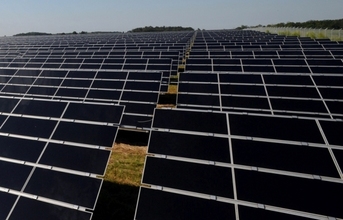
The Union Cabinet chaired by the Prime Minister, Narendra Modi, gave its approval for stepping up of India's solar power capacity target under the Jawaharlal Nehru National Solar Mission (JNNSM) by five times, reaching 1,00,000 MW by 2022.
The target will principally comprise of 40 GW Rooftop and 60 GW through Large and Medium Scale Grid Connected Solar Power Projects. With this ambitious target, India will become one of the largest Green Energy producers in the world, surpassing several developed countries.
The total investment in setting up 100 GW will be around Rs. 6,00,000 cr. In the first phase, the Government of India is providing Rs. 15,050 crore as capital subsidy to promote solar capacity addition in the country. This capital subsidy will be provided for Rooftop Solar projects in various cities and towns, for Viability Gap Funding (VGF) based projects to be developed through the Solar Energy Corporation of India (SECI) and for decentralised generation through small solar projects.
The Ministry of New and Renewable Energy (MNRE) intends to achieve the target of 1,00,000 MW with targets under the three schemes of 19,200 MW.
Apart from this, solar power projects with investment of about Rs. 90,000 crore would be developed using Bundling mechanism with thermal power. Further investment will come from large Public Sector Undertakings and Independent Power Producers (IPPs). State Governments have also come out with State specific solar policies to promote solar capacity addition.
The Government of India may also approach bilateral and international donors as also the Green Climate Fund for achieving this target. Solar power can contribute to the long term energy security of India, and reduce dependence on fossil fuels that put a strain on foreign reserves and the ecology as well.
The solar manufacturing sector will get a boost with this long term trajectory of solar capacity addition. This will help in creation of technology hubs for manufacturing. The increased manufacturing capacity and installation are expected to pave way for direct and indirect employment opportunities in both the skilled and unskilled sector.
Continued to next page


























